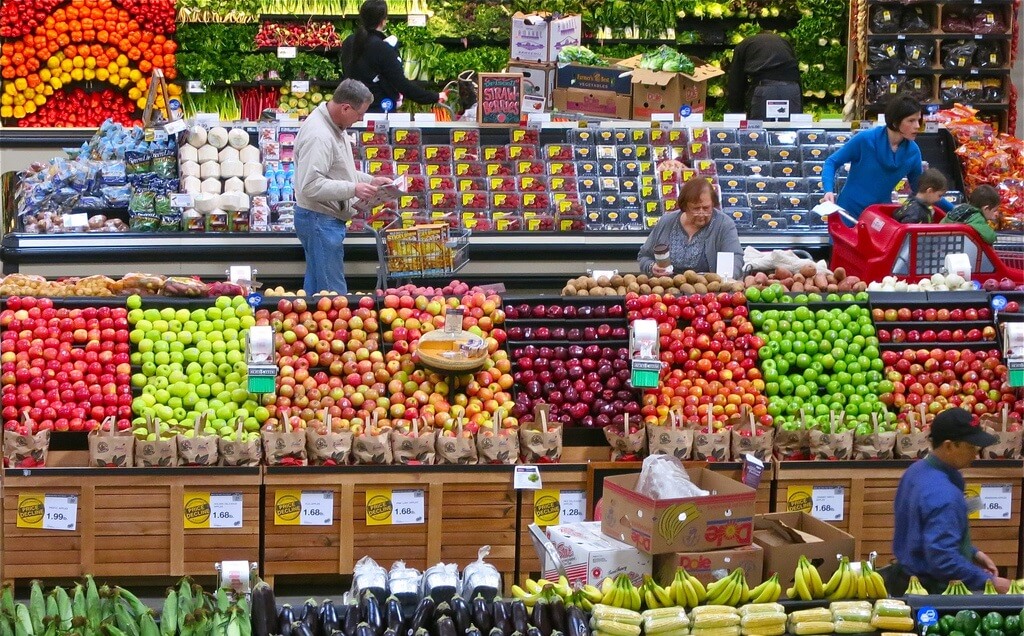As true Agile enthusiasts, we strive to eliminate all of the waste in our processes. Cutting the production time, looking for the best practices and asking for frequent client feedback are just a few of the methods we use. However, the focus is usually on the waste of time and money, but another very important aspect is completely forgotten. Should the physical waste of our product be considered a part of the Agile cycle?
While this is mostly not relevant in the software development field where Agile has originated, it is quickly becoming something that has to be talked about. As Agile spreads into other fields and industries, the amount of physical wastefulness is becoming more and more apparent. One of the most obvious examples of this can be found very close to each and every one of us. Most likely, you have even visited this business today or plan to do so later on, as it is something we simply cannot go without – the food stores.
Food Industry
Food is essential to our survival and there is no surprise that the food industry has mastered the art of putting it onto our dinner table. We are used to getting those cold drinks on hot summer days and curling up with soul food when it’s raining out. The food industry collects massive amounts of data on our eating habits, holidays, weather, health situation, etc. and does everything else possible, so that we could all find exactly what we are looking for at the right time. Think about it – when was the last time you couldn’t get something you wanted at the grocery store?
Unless you are into those gourmet cheeses and wines, it has probably been a while. Fresh fruit, vegetables, meats, fishes and everything else year round just around the corner. From this point of view it would seem that food industry has truly mastered agility – getting us what we want when we want it. But now take a moment and think about what happens to the food that is not sold? How much food is thrown out every day because the store ordered too much, it did not look nice or had the wrong packaging?
You have an estimation? Here is the truth – United States alone throws out a third of the food it produces and the grocery stores are accountable for 10% of that number. Would you call that Agile? Even if lean methods are used for delivery of the goods, the practice of over ordering is still alive and creating massive amounts of waste in companies that call themselves Agile. Such stores are not only wasting money, they are actually creating physical waste that rots and pollutes our planet. And all this while there are still thousands and thousands of people starving.
The Agile Lifecycle
So when talking about Agility in fields that produce an actual physical product, we should not only be talking about getting it to the customer efficiently, but thinking about the whole lifecycle and how it could be optimized. As waste is created not only in our production cycle and processes, but also as a result of our actions. And as per the Agile standards it should be avoided at any cost.
Supermarkets and the food industry in general is just one of many examples were companies use Agile practices, but are not truly Agile. And by no means is this their fault, as Agile itself only talks about production optimization. But as the method is moving away from software development and into other fields, it is important to start thinking about the whole product lifecycle instead. So that there is no waste not only in the production of our products, but also as a result of our actions, creating environmentally responsible and sustainable practices.
In the case of food industry there are already several ways of avoiding wasted food. First and foremost is analyzing and trusting the data to order the necessary amounts instead of over ordering. Working with charities and giving away the leftover food to those less fortunate people. And educating the customers about the food industry and why the spotted banana or a bruised tomato is still perfectly good to eat. The important thing now is understanding that those practices should be part of the Agile cycle, not just a good deed a company can opt for.
As Agile is moving and expanding away from its original roots in software development, it is becoming more important to rethink how its values translate to physical products. Eliminating waste should no longer be understood as just making sure the company processes are effective, but should instead take over the whole product lifecycle from beginning to end. Thus making sure that not only our processes are waste free, but the results of our actions are as well.





